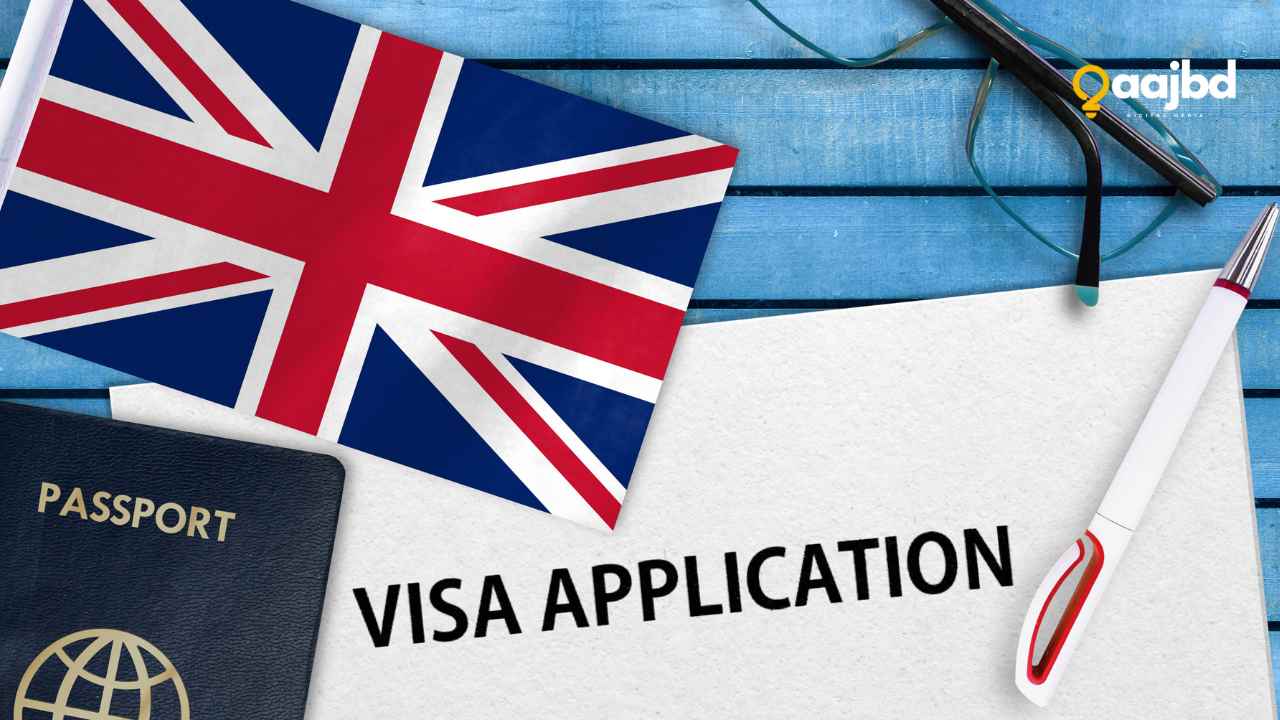Anúncios
Planning a trip to Europe and feeling overwhelmed by the thought of visas? You’re not alone.
With its rich tapestry of cultures, cuisines, and landmarks, Europe is a dream destination for many. But with so many countries and varying regulations, the question arises: “Do I need a visa for every country in Europe? ” Navigating this maze can be daunting, yet vital for a smooth journey.
Anúncios
This article breaks down the essentials you need to know before packing your bags. Imagine the relief of knowing exactly where you stand, ensuring your travels are filled with adventure, not administrative headaches. Stay with us to discover how you can travel smarter, save time, and focus on making memories rather than worrying about paperwork.
Visa-free Travel Zones
Traveling through Europe can be a delightful experience with its rich tapestry of cultures, history, and stunning landscapes. But as you plan your journey, a common question might arise: Do you need a visa for every country in Europe? The answer is not as straightforward as it seems. Some areas offer visa-free travel zones that make it easier for you to explore multiple countries without the hassle of obtaining visas for each one. These zones provide a seamless travel experience and can significantly impact your itinerary planning. Let’s dive into the specifics of these visa-free zones.
Anúncios
The Schengen Area: Your Gateway To Europe
The Schengen Area is a group of 27 European countries that have abolished passport and other types of border control at their mutual borders. If you’re a tourist, this means you can travel freely between these countries without a visa for up to 90 days. Imagine wandering through the streets of Paris today, and sipping coffee in a cozy café in Rome tomorrow—all without the worry of visa paperwork.
However, remember that not all European countries are part of the Schengen Zone. The UK and Ireland, for example, have their own visa requirements. So, before you pack your bags, check which countries are part of Schengen and plan accordingly.
Visa-free Travel For Eu Citizens
If you’re an EU citizen, you’re in luck! You can travel visa-free not only within the Schengen Area but also to other EU countries outside it. This privilege allows you to visit countries like Bulgaria and Romania without any visa hassle. No need to stand in long queues or fill out tedious paperwork.
This freedom means spontaneous trips are easier than ever. One moment you could be enjoying a sunny beach in Croatia, and the next, exploring historical sites in Greece. But always keep your passport handy, as some countries may require it for identification purposes.
Special Agreements: Beyond The Schengen Zone
Some European countries have special visa-free agreements with other nations outside the EU. This means citizens of these countries can enjoy visa-free travel to certain European nations. For instance, citizens from the USA, Canada, and Australia can often enter the Schengen Area without a visa for short stays. This opens up a world of possibilities for international travelers.
However, each agreement comes with specific rules and time limits. It’s crucial to check these details before booking your flight. Wouldn’t it be disappointing to plan a trip only to find out you need a visa for one of your destinations?
Considerations For Longer Stays
Visa-free travel is typically designed for short stays. If you plan to stay longer than the allowed period, you may need a specific visa. Are you considering studying or working in Europe? Then, you’ll need to explore different visa options that suit your purpose.
Researching the requirements for longer stays can save you from unexpected surprises. It’s better to be prepared than to face complications during your travels. Wouldn’t you agree that a smooth travel experience is worth a little extra effort beforehand?
Understanding the visa-free travel zones in Europe can significantly ease your travel planning. Make sure to check current regulations, as they can change based on international agreements and policies. Enjoy your European adventure with peace of mind!
Schengen Area Explained
Traveling through Europe can be a thrilling adventure, but it often raises the question: do you need a visa for every country you plan to visit? The Schengen Area simplifies this concern for many travelers. This region consists of 27 European countries that have abolished border controls between them, allowing free movement with just one visa. Understanding the Schengen Area can save you time and effort, ensuring your European journey is as smooth as possible.
What Is The Schengen Area?
The Schengen Area is a group of European countries that have agreed to allow free movement across their borders. Think of it as a unified zone where you don’t need to show your passport every time you cross into a new country. You’ll be able to visit places like France, Germany, and Spain without the hassle of obtaining separate visas for each.
Imagine you’re backpacking through Europe. You start in Paris, hop on a train to Berlin, and then head to Rome. With a Schengen Visa, this travel is seamless. No waiting in long lines at border checks; just pack your bags and go.
Countries In The Schengen Area
The Schengen Area includes most of the European Union countries, but not all. It’s important to know which countries participate. Here’s a quick list:
- Austria
- Belgium
- Czech Republic
- Denmark
- Finland
- France
- Germany
- Italy
- Netherlands
- Spain Add more countries as needed
However, countries like Ireland and the UK are not part of the Schengen Area, meaning you’ll need separate visas to visit them.
How Long Can You Stay?
With a Schengen Visa, you can stay in the Schengen Area for up to 90 days within a 180-day period. This is great for short trips or extended vacations.
Consider planning a long summer vacation across multiple countries. You could spend a month lounging in the beaches of Spain, two weeks exploring Italian art, and still have time for other destinations.
Who Needs A Schengen Visa?
Not everyone needs a Schengen Visa to enter the Schengen Area. Citizens of the EU, EEA, and Switzerland can travel visa-free. But if you’re from outside these regions, you might need one.
Picture yourself excitedly packing for a European escapade, only to realize you need a visa. Checking the requirements early can prevent this scenario. Always verify if your nationality requires a Schengen Visa before you book your flight.
Applying For A Schengen Visa
Applying for a Schengen Visa is straightforward. You need to submit your application at the consulate of the country you plan to visit first or spend the most time in. Gather necessary documents like your passport, travel itinerary, and proof of accommodation.
Have you ever scrambled to find the right documents for a visa application? Start early and double-check everything. It’s better to be over-prepared than to miss your dream trip due to a missing paper.
The Schengen Area simplifies traveling in Europe, but it requires careful planning. Which countries will you visit first? How long will you stay? By understanding the Schengen rules, you can craft an unforgettable journey across the continent.
Countries Outside Schengen
Europe is a diverse continent with varying visa requirements. Not every country follows the Schengen Agreement. Those outside Schengen have their own rules. These countries include the UK, Ireland, and several Eastern European nations. Travelers must understand these requirements before planning trips. Let’s explore some of the visa policies for these countries.
United Kingdom
The United Kingdom is not part of Schengen. It has its own visa system. Many travelers need a visa to enter. Visa-free travel is available to certain nationalities. Check your eligibility before visiting. The UK also offers short-term tourist visas. These are valid for up to six months. It’s essential to prepare documents in advance.
Ireland
Ireland operates independently of Schengen. It has separate visa policies. Citizens of EU and EEA countries can enter visa-free. Some other nationalities enjoy visa exemptions too. For tourists, a short-stay visa is often required. This allows stays of up to 90 days. Always verify visa needs before traveling.
Romania
Romania is outside the Schengen zone. It has its own visa system. EU citizens can enter without a visa. Other travelers may need a visa. Romania offers short-stay visas for tourists. These are typically valid for 90 days. It’s vital to check requirements based on your nationality.
Bulgaria
Bulgaria does not follow Schengen rules. It has distinct visa requirements. EU citizens can visit without a visa. Some non-EU nationals need a visa for entry. Tourist visas are available for short stays. These usually last up to 90 days. Always confirm visa details before planning a visit.
Croatia
Croatia is not part of Schengen yet. It has unique visa regulations. Many EU citizens can travel visa-free. Others might need a visa for entry. Croatia offers tourist visas for short durations. These are valid for up to 90 days. Checking visa requirements is crucial for all travelers.

Credit: www.inquirer.com
Short-term Visa Requirements
Traveling across Europe can be a thrilling experience. But understanding short-term visa requirements is crucial. Different countries have different rules. Knowing them helps avoid travel hiccups.
Visa-free Countries
Several European countries don’t require a visa for short visits. Schengen Area members like France, Germany, and Spain allow visa-free travel. This applies to citizens from specific countries.
Schengen Visa
The Schengen Visa allows travel across 27 countries. It covers most of Europe. It’s ideal for travelers visiting multiple countries in a short span.
Non-schengen Countries
Some countries aren’t part of the Schengen Agreement. The UK and Ireland require separate visas. Travelers must apply individually for these nations.
Visa Duration And Validity
Short-term visas typically last 90 days. They’re valid for tourism, business, or family visits. Exceeding this limit can lead to penalties.
Application Process
Applying for a visa involves filling forms and providing documents. Proof of funds, travel itinerary, and accommodation details are needed. It’s best to apply weeks before travel.
Visa Fees
Visa fees vary by country. They depend on the type and duration of the visa. Some nations offer discounts for children and students.
Long-term Stay Options
Traveling through Europe can be an enriching experience. But staying longer than tourist visas allow requires understanding long-term options. Europe offers various paths for extended stays, each with unique requirements. Knowing these options can help plan an extended European adventure.
Work Visas
Many European countries offer work visas for non-citizens. These visas permit you to work and live in Europe for a longer period. Each country has different requirements and processes. Researching specific country requirements is essential before applying.
Student Visas
Consider enrolling in a European educational institution. Student visas allow you to live and study for an extended period. This option is ideal for those seeking education and cultural immersion. Check the institution’s requirements and visa conditions.
Schengen Visa Extensions
The Schengen Area allows short-term travel across 26 European countries. For stays longer than 90 days, a visa extension is needed. Applications must show compelling reasons for the extended stay. Approval is subject to each country’s regulations.
Residency Permits
Residency permits offer a path to long-term living in Europe. These permits often require proof of income or investment. Some countries offer permits for retirees or investors. The process can be complex, requiring detailed documentation.
Family Reunification Visas
If you have family in Europe, a reunification visa may be possible. This visa allows you to join family members residing legally in Europe. Each country has distinct policies and paperwork requirements. Understanding these rules is crucial for successful application.

Credit: schengeninsuranceinfo.com
Visa Application Process
Planning a trip to Europe often raises visa questions. Schengen Area countries share a common visa policy. Some European countries require separate visas. It’s essential to check each country’s requirements before traveling.
Navigating the visa application process for traveling through Europe can feel overwhelming, especially if you’re visiting multiple countries. But understanding the basics can save you time and stress. Let’s break it down into simple, actionable steps that can help you plan your European adventure more effectively.
Understanding The Schengen Zone
The Schengen Zone is a group of 27 European countries that have agreed to allow free movement across their borders. If you’re traveling to countries within this zone, you typically only need one Schengen visa. This visa allows you to stay up to 90 days within a 180-day period. However, it’s essential to remember that not all European countries are part of the Schengen Zone. For instance, the United Kingdom and Ireland have their own visa policies. Always check if your destinations require separate visas.
Steps To Apply For A Schengen Visa
Start by determining which country you’ll be spending the most time in or where your main purpose of travel lies. This is the country where you should apply for your Schengen visa. Next, gather the necessary documents. This typically includes a completed application form, passport photos, travel itinerary, and proof of accommodation. You might also need to show proof of financial means and travel insurance. Once your documents are ready, schedule an appointment with the consulate or embassy of the country you’re applying to. Be prepared for a possible interview and additional questions about your travel plans.
Tips For A Smooth Application Process
Plan ahead and apply for your visa well in advance of your travel dates. Consulates can be busy, especially during peak travel seasons, and processing times can vary. Double-check all documents for accuracy. Any discrepancies can lead to delays or even rejections. Consider sharing your experience with fellow travelers online, as real-life insights can be invaluable. When I applied for my Schengen visa, I found a helpful community that shared tips on handling unexpected questions during the interview process. Are you prepared for any additional costs that might pop up during the process? Visa fees are standard, but sometimes there are extra charges for express processing or document verification.
What If You Need Multiple Visas?
If your itinerary includes countries outside the Schengen Zone, you’ll need to apply for separate visas. Research each country’s specific requirements and deadlines. Some travelers find it beneficial to enlist the help of a visa service agency. They can guide you through the paperwork and ensure that all documents meet the necessary standards. By taking these steps, you’ll be better equipped to handle the visa application process. Careful preparation ensures that your dream trip across Europe can unfold seamlessly. Are there any unexpected surprises you might encounter along the way? Yes, but with the right preparation, you can handle them with ease.
Special Cases And Exceptions
Travel rules in Europe can be tricky. Some countries need a visa, while others don’t. Special agreements may apply, impacting your travel plans. Always check specific country rules before you go.
Navigating the visa landscape in Europe can seem overwhelming. You might wonder if you need a visa for every country on your itinerary. While the Schengen Area simplifies travel across many European countries, there are special cases and exceptions to consider. Understanding these nuances can save you time and potential headaches at border control.
Traveling To The Schengen Area
The Schengen Area, covering 27 European countries, allows passport-free travel across its borders. If you have a Schengen visa, you can move freely within these countries. However, it’s crucial to know that not all European countries are part of this agreement.
Countries Outside The Schengen Zone
Some European countries, like the UK and Ireland, have their own visa policies. Even if you have a Schengen visa, you’ll need a separate visa to enter these countries. This is a key detail to remember when planning your itinerary.
Visa-free Agreements
Certain nationalities benefit from visa-free agreements with specific countries. For example, citizens of the United States, Canada, and Australia can enter most European countries for short stays without a visa. Always check if your country has such agreements to make your travel smoother.
Special Territories And Regions
Some regions, like the Faroe Islands or Greenland, have unique entry requirements despite being part of Denmark. These territories may not accept a standard Schengen visa. Always research the specific entry rules for territories you plan to visit.
Short-term Vs. Long-term Stays
Your visa needs might change based on the length of your stay. Short tourist visits might not require a visa, but longer stays for work or study likely will. Evaluate your travel duration and purpose to determine your visa requirements.
Frequent Travelers’ Tips
If you’re a frequent traveler, consider applying for a multi-entry Schengen visa. It allows multiple entries within a specific period, making your travels more flexible. Always keep your documents organized and check expiration dates to avoid last-minute issues. Have you ever had to navigate a tricky visa situation while traveling in Europe? Share your experiences and insights with fellow travelers. Your story might just help someone plan their perfect European adventure!
Travel Tips For European Countries
Traveling across Europe offers diverse experiences and cultures. Each country has unique attractions and rules. Understanding visa requirements can ease your journey.
Many European countries share visa policies. The Schengen Area is one of them. It allows travel across several countries with a single visa. But not all countries in Europe belong to the Schengen Area.
Research is key before travel. Ensure you know which countries need separate visas. This knowledge will save time and stress.
Visa Requirements For Schengen Countries
The Schengen Area covers many popular destinations. France, Germany, Italy, and Spain are included. One visa permits travel between these countries. Check if your country is part of the Schengen visa waiver program. This can simplify your travel plans.
Understanding Non-schengen Countries
Non-Schengen countries have different rules. The UK, Ireland, and Croatia require separate visas. Always check the specific requirements. Avoid surprises by planning ahead.
Tips For Applying For A Visa
Start your visa application early. Each country has its own process. Gather all necessary documents before applying. This includes passport photos and proof of travel. Be prepared for possible delays in processing.
Preparing For Border Control
Keep your documents organized. Have your passport, visa, and travel itinerary ready. Border checks can be quick if you are prepared. Be polite and answer questions clearly.
Exploring Europe With Ease
Familiarize yourself with local customs. Learn basic phrases in the native language. This can enhance your travel experience. Be open to new cultures and enjoy your journey.
Conclusion
Traveling in Europe can be exciting. Not every country needs a visa. Schengen Area allows free movement in many European countries. Always check the specific visa requirements before planning your trip. Rules can change, so stay updated. Some countries need extra documents.
Others may have simple entry processes. Careful planning ensures a smooth journey. Research each destination’s requirements. Enjoy the diverse cultures and beautiful landscapes. Safe travels!





